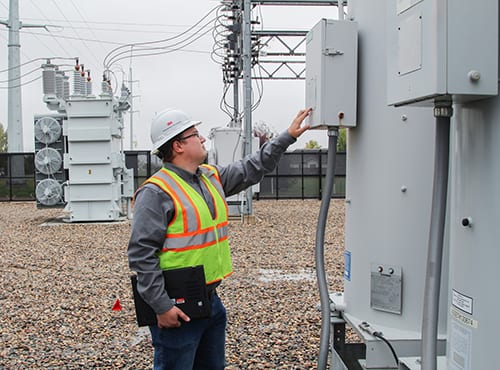 Substations play a crucial role in delivering power to consumers, but they face multiple threats that can result in unplanned shutdowns and grid failure, which is why it’s important for electric utilities to safeguard personnel and equipment with a substation security checklist.
Substations play a crucial role in delivering power to consumers, but they face multiple threats that can result in unplanned shutdowns and grid failure, which is why it’s important for electric utilities to safeguard personnel and equipment with a substation security checklist.
Substations are widely dispersed and often located in unpopulated and isolated locations. Damage usually results from animal intrusions, Mother Nature, copper theft, vandalism and a growing number of terroristic incursions in the form of physical attacks and cyberattacks.
Utilities have realized that following the right substation security checklist and tracking incidents in real time are key approaches to mitigating these threats and growing substation resilience.
5 substation security checklist actions to protect the grid
- Assess the risks. Before implementing security protocols, it’s important to identify potential threats like the ones mentioned earlier. Consider starting with an in-house assessment to find any infrastructure or IT vulnerabilities – specifically those that lack visibility. It’s also important to initiate regular external site audits to help identify problems.
- Take preventive action. It’s important to make sure security protocols and policies are updated. This includes planning for authorized access and threat recovery. Draft contingency plans, run drills with staff and take steps to strengthen network security by working with the right industry professionals. Additionally, foster a culture of accountability among staff.
- Deploy the latest sensors and camera technology. Be sure to implement effective perimeter security with sensors that are concentrated in areas where there is a higher likelihood of problems occurring, such as a chain-link fence that could easily be cut into. Consider pairing each sensor with an automatic pan tilt zoom (PLT) camera that is high-definition, infrared and Wi-Fi-enabled with verbal communication capabilities. Therefore, when a sensor detects an intruder or anomaly, the cameras automatically focus on what it is and operators can respond in real time.
- Follow the zone approach. It helps to conceptualize a substation as having multiple zones. Different detection components can be applied for each zone, which are then tied together through an integrated security network.
- Remain in compliance with federal regulations. Electric utilities need to take steps to remain compliant with North American Electric Reliability Corporation critical infrastructure protection (NERC CIP).
Related posts
How utilities manage cybersecurity to protect critical energy infrastructure
Benefits of microgrids | Smart utility approach advances energy systems